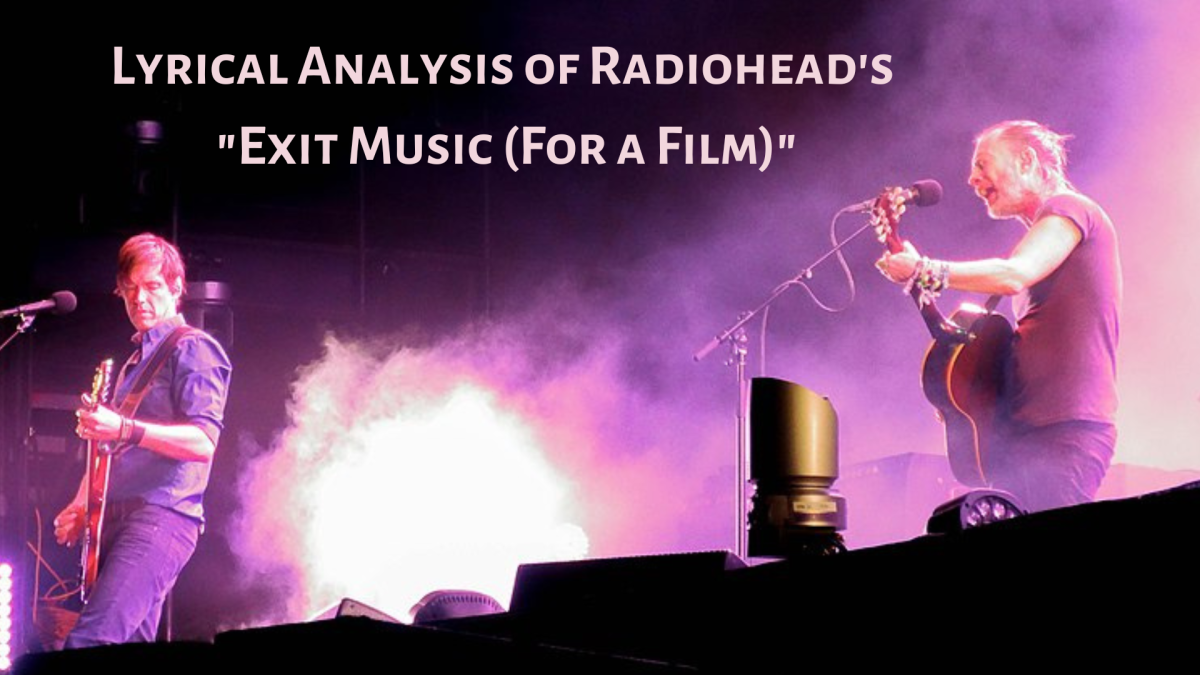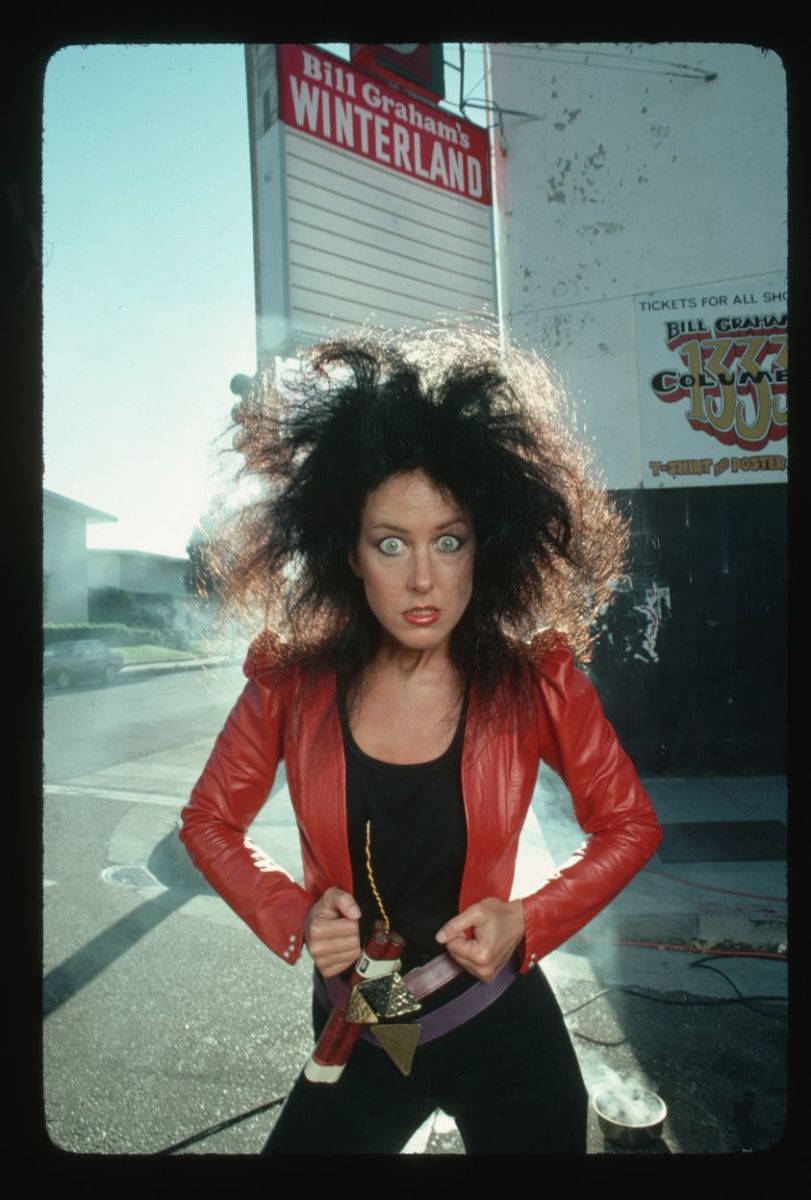An Essay on the Radiohead Discography, 1992 - 2007
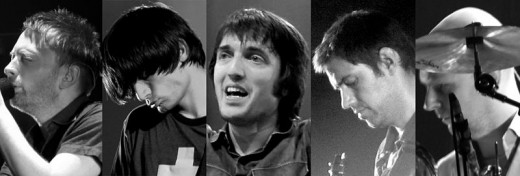
Early Development. Pablo Honey and The Bends, 1992-1995
When Radiohead burst onto the scene in 1993 with the hit song “Creep” from their debut album Pablo Honey, they were acknowledged as a slightly distinctive band of the post-grunge era. Their songs were not vastly different from much else that was on the radio at the time. They played gritty, listener-friendly rock n’ roll driven by an emotional lead singer, distorted guitars, and simple drumbeats steadily pacing each song. “Creep” offered some distinctions in sound yet not in structure. For example, a few moments before the song’s chorus, lead singer Thom Yorke utters “I wish I was special,” answered by guitarist Jonny Greenwood violently flanking a deep scratching sound from his guitar. Yorke returns with “You’re so very special,” and Greenwood punches the guitar again making a noise that sounds like the song being hastily torn at its seams. But Yorke emerges and confidently sings “But I’m a creep,” just as the screeching of the tear lets up and gives way to the distorted backbone of the song’s chorus. This intriguing type of sound was different from the rest of Pablo Honey, and was an early indication of the band’s unconventional style, especially that of Yorke and Greenwood. They were still very young, teeming with energy and suddenly successful. After touring and promoting themselves all over the world with the same bunch of songs though, they felt ready for a change. All of this allowed for the growth of their sound as they went on to record The Bends.
To follow up Pablo Honey and the success of “Creep,” Radiohead needed to establish themselves as more than one-hit wonders. Although commercial success was not a top priority, creating a newer and more challenging sound was. Enlisting producer John Leckie, the band became freer to experiment with these new sounds and song structures. Jonny Greenwood commented, "We did what we wanted for our second album, and we ignored all advice, unlike the first record." No longer feeling the intense corporate and media pressure, Radiohead made a choice to establish themselves as a unique force to be reckoned with by putting no limits on their creativity.
After it was finally released, The Bends escalated Radiohead from insignifcant post-grunge derivatives to respected songwriters in tune with each other and the future of rock n’ roll. The music was still not intensely complex structurally, but it had become prettier, richer, and more mature sounding with the increased use of the keyboards, effects, and newfound harmonies inspired by such greats as Jeff Buckley, R.E.M., and Morrisey. Every song was catchy in its own way, and the album ended up spawning numerous mainstream hits.
“My Iron Lung” begins with high-pitched guitar notes that sound almost extra-terrestrial before transforming into a distorted, fast-paced rock song complete with a climactic guitar solo. The conventional structure echoes “Creep,” but builds upon its sound by adding new layering with the supplementation of fresh effects such as a slightly muted keyboard sound. Much of the rest of the album sticks to a similar formula of guitar driven rock. “The Bends” and “Just” are both loud and relatively fast-paced songs, with Thom Yorke’s falsetto voice crooning over the distortion. His voice adds elegance to the songs and blurs the line between hard rock and pop ballad. Yorke’s lyrics on the album contribute to the essence of the ballads with personal lines of affliction like “need to wash myself again to hide all the dirt and pain, 'Cause I'd be scared that there's nothing underneath,” on “The Bends.” Much of the beauty of the album shines through on tracks like the closer “Street Spirit (Fade Out),” whose eerily melancholic words are intensified by a haunting repetitive guitar part and swift orchestral strings. Yet as the end of the song slowly decrescendos, Yorke redemptively repeats, “Immerse yourself in love,” reassuring listeners with a sense of hope.
Overall, the moods created by The Bends range from cool and catchy to depressing and introspective, yet there is a sense of harmony between each song and none seem out of place on the album. For a collection of such mainstream playability, this is quite a feat and it helped establish Radiohead as genuine artists on the fast-track to mega-stardom. By the time their next album was released, the band had garnered a large fanbase and plenty of hype. Incredibly, most expectations were tremendously surpassed by the album, OK Computer, as it was widely considered an unprecedented leap forward in popular music.
Creep
The Bends Live
Pablo Honey and The Bends on Amazon
Ascent to Greatness. OK Computer, 1996-1997
Commenting on Radiohead’s desire to progress, drummer Phil Selway stated, “The Bends was an introspective album...There was an awful lot of soul searching. To do that again on another album would be excruciatingly boring.” Obviously the band would not be satisfied by releasing another batch of conventionally structured, emotional rock ballads. They brought in a new producer, Nigel Godrich, known for his dense “layers” of sound, and began recording outside of the studio for the first time, initially in a converted apple shed in the English countryside and then in an old English mansion. They stopped listening to pop and focused on more diverse and obscure sounds such as that of jazz icon Miles Davis and trip-hop innovator DJ Shadow, yearning to replicate the darkness and density of such artists. The results of these intentional departures from the norm was OK Computer. Full of bold, spacey, and atmospheric tunes, the album forever changed many listeners’ perceptions of Radiohead.
OK Computer forcefully opens with a raw guitar hook chanting over bouncing sleigh bells. The rhythm guitar gently emerges with a crescendoing melody and a staggered, irregular drumbeat bumps itself into the piece soon thereafter. All of these sounds, possibly aside from the melody, are serious departures from the conventional sound of The Bends. The rest of the song progresses into a feedback-laden, atmospheric whirlwind that builds upon the noise it has created until the guitar hook finally subsides and the sound gently diminishes.
Yorke’s lyrics on OK Computer are less personal than on The Bends. While he once sang of frustrations with personal insecurity, he makes a decisive move toward commentary on the bleakness of modern-day society on OK Computer. Technology plays an integral role on the album as well. The song “Fitter Happier” is a haunting piece featuring a robotic voice reading lines that at times seem pulled from a trite self-help guide and are supplemented with Yorke’s haunting imagery such as the closing line of “a pig in a cage on antibiotics.”
Songs like these elevate OK Computer from a mere rock album to a meaningful work of art pleading its audience to escape the trappings and banal expectations of society. Such themes pervade the rest of the album and the music itself challenges traditional songwriting. The overall sound of the record is a wide-ranging atmosphere of highs, lows, brightness, darkness, and depth achieved with synthesizers, various effects, and new instruments such as bells and strings. The music projects intense maturity and distinction, often sounding other-worldly with the high-tech musical wizardry of Godrich, Greenwood, and York which soaks each song in a complex, digital beauty. Even though the lyrical subject matter is often desperately dreary, the music radiates beyond the depressed characters and images in Yorke’s songs and offers hope for a better day. With OK Computer, Radiohead defined themselves as innovative and intellectual musical masterminds that could not be ignored.
Paranoid Android, some say it's Radiohead's "Bohemian Rhapsody"
Making Rock n' Roll Look Like Child's Play. Kid A and Amnesiac, 1999-2001
Over the course of the 90’s, not many bands of both widespread international popularity and universal critical acclaim had emerged. Radiohead was an exception. Consequently, many critics charged them with the task of “saving rock music.” Adhering to this standard though was not on the band’s agenda. Instead of creating another body of hook-laden, stadium-rocking tunes, Yorke and his bandmates looked toward the future and ambitiously turned to the world of electronic music in order to find their new sound. The result was an unprecedented breakthrough. As Pitchforkmedia’s Brent DiCrescenzo put it, “Kid A makes rock and roll childish…Comparing this to other albums is like comparing an aquarium to blue construction paper.” Whether the album helped “save” rock music or not is debatable. More importantly though, it clearly set a new standard of innovation, showcased Radiohead’s musical bravado, and their uncanny ability to conquer seemingly any type of music and make it their own.
The album’s opener is “Everything In It’s Right Place,” a song written on a piano and computer that lacks the presence of any guitars or drums. The song does not sound remotely similar to anything on OK Computer. It begins suddenly with a harmonic digression of synthesized piano sounds which float on smoothly throughout the song providing its foundation as Yorke’s voice dances on top, sounding more instrumental than human. A cold, other-worldy atmosphere is created and rock n’ roll feels more distant as each moment on the album glides by. The song “Idioteque” opens with a pulsating digital drumbeat beneath melodiously gentle eruptions of sound that swell and glow, complementing the rhythm until Yorke’s delicate voice shines through and drives the song through an intense, artificial soundscape. Other songs feature horns, drums, pianos, guitars, and further digitial experimentation that mash together elements of pop, rock, ambient music and jazz. The listener is never overwhelmed enough by any of these elements though to classify Kid A under any specific genre. Each and every song pushes the envelope of conventional songwriting as listeners are treated to an elegant wedding between digitial and acoustic instrumentation. Although the record company had a hard time marketing such a seemingly alien new sound, the band’s devout fanbase made it quite commercially successful which broke new ground for artistic experimentation in popular music.
Kid A’s follow-up release from 2001 was entitled Amnesiac and was a collection of songs recorded during the Kid A sessions but not used on the album. In an attempt to distinguish the two records, Thom Yorke stated, “I think the artwork is the best way of explaining it. The artwork to Kid A was all in the distance. The fires were all going on the other side of the hill. With Amnesiac, you're actually in the forest while the fire's happening.” While Kid A may have seemed distant, or unreachable for many listeners, Amnesiac offered a new gateway to its predecessor. The songs resemble those on Kid A with their electronic backbones and obscure harmonies, but often seem more accessible. After all, Amnesiac spawned several marketable singles, while Kid A produced none.
"Reflections on Kid A". Intriguing interviews and great live footage
Kid A and Amnesiac on Amazon
Mixing It Up. Hail To The Thief, 2002-2003
Unable to stop recording, Radiohead began forming the songs for its next album, Hail To The Thief, in late 2002. The band wanted to progress, but it was not easy to follow such an uncanny divergence from the norm like their previous two works. Therefore, armed with the digital know-how of the last two albums and the immense musical talent of each band member, the group recorded a batch of songs that sounded like a return to their alternative rock days, if those days had existed fifty years in the future. In other words, Hail To The Thief, sounded foremost like a rock record, but was pervaded by a heavy electronic presence at the same time, giving it a futuristic feel as well. It basically seemed to mix all of the distinctiveness of Radiohead’s former albums into one resulting in an intriguing new sound once again.
For listeners yearning for a return to the glory days of Radiohead’s rock anthems, Hail To The Thief’s opener, “2+2=5,” was the answer to their prayers. The song was proof that the band had not forgotten about its hard rocking roots. The feedback, hooks, and distinct vocals were all there. However, an electronic backbeat keeping time and other spacey effects would make the song feel out of place on The Bends or OK Computer. The digital influence remains throughout the entire album, but for the most part it takes a backseat to the dynamic guitars, strings, pianos, and drums. For instance, the album’s first single, “There, There,” is a percussive, guitar-driven song. However, the digital effects that linger in the background of the song create a dark mystique that is hard to shake from memory.
Other songs are similarly dark sounding as is not uncommon with many Radiohead tunes. The disturbing nature of current events of the time, such as September 11th and the War in Afghanistan, contributed lyrically to this darkness. Always one to speak his mind, Yorke is not silent about his discomfort with the world around him, but his words are not overtly political. Much like previous records, the lyrics are cryptic but engaging. In “2+2=5” Yorke exclaims, “Oh hail to the thief…Don’t question my authority or put me in the box…Oh go up to the king and the sky is falling in.” The words seem to allude to politics, but don’t put forth a clear message. This type of ambiguity is just another part of the group’s artistic.method though. Telling people what to think would go against practically everything they stand for. If there is one thing to be learned from Radiohead’s work up to this point, it is that individuality is of the utmost importance.
The band did not go unrewarded for their distinctive new release. The album was highly regarded by critics and fans. Those critics who had shunned Radiohead after Kid A for abandoning their role as the supposed “saviors” of rock n’ roll, found themselves much more in tune with Hail To The Thief. The delicate balance it achieved between the old and new Radiohead sounds was remarkable. Of course, it was by no means a typical rock record. No one else was putting out such avant-garde music at the time while garnering widespread airtime on the radio and TV along with international super-stardom. Radiohead seemed to be on top of the world and brimming with confidence. They no longer had anything to prove. On their next album, all of these attributes made for yet another striking musical release.
There, There Live
Back to Basics. In Rainbows, 2007
After the release of Hail To The Thief, Radiohead took some time off. Their next album, In Rainbows, was released four years later, the longest gap between any two consecutive Radiohead albums. During that time period, the band’s record contract had expired, yet they were fine with being on their own. In fact, they used this unique circumstance to release the album on the internet and allowed fans to set their own price for the download. In this audacious move, Radiohead showed confidence in their fans to pay a fair price. As more music is downloaded from the internet every day, and the proliferation of practically any artist is so widespread, this technique may have been yet another stroke of genius by the band because it was obvious to them that the album would be downloaded anyway. Although the band refused to release their profits, In Rainbows debuted at number one on the charts, and Radiohead grabbed the attention of the entire music industry with their revolutionary economic idea. It is hard to imagine many other bands that could both think of such a strategy and have it pay off with such great success.
The album itself is another brilliant work of art and a testament to Radiohead’s undeniable staying power. The songs are not groundbreaking works in technicality or stuctural innovation, but they illustrate the group’s ability to draw beauty from simplicity, something listeners may have forgotten over the years. The songs follow basic chord progressions and do not rely heavily on digital effects like Kid A or Amnesiac. Lyrically, Yorke categorized many of them as “seduction songs,” which is not hard to understand when listening to songs like “House of Cards.” The song opens with an extremely pretty and simple solo guitar hook that persists throughout the entire song. Yorke’s voice sounds relaxed and free from strain as he sings “I don’t want to be your friend, I just want to be your lover.” The entire album perpetuates this seductive, laid-back mood, and the maturity of the band is fully recognizable. In Rainbows made millions of fans fall in love all over again.
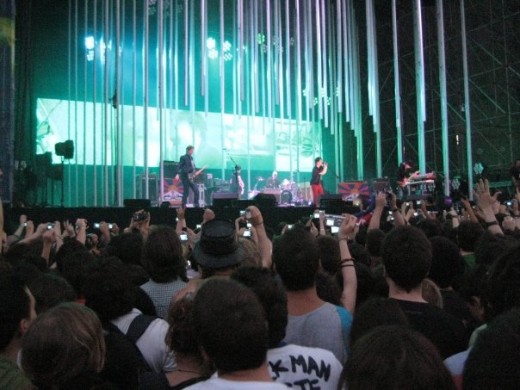
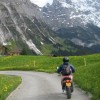
![The Bends [Explicit]](https://m.media-amazon.com/images/I/51slAqhhVPL._SL160_.jpg)


